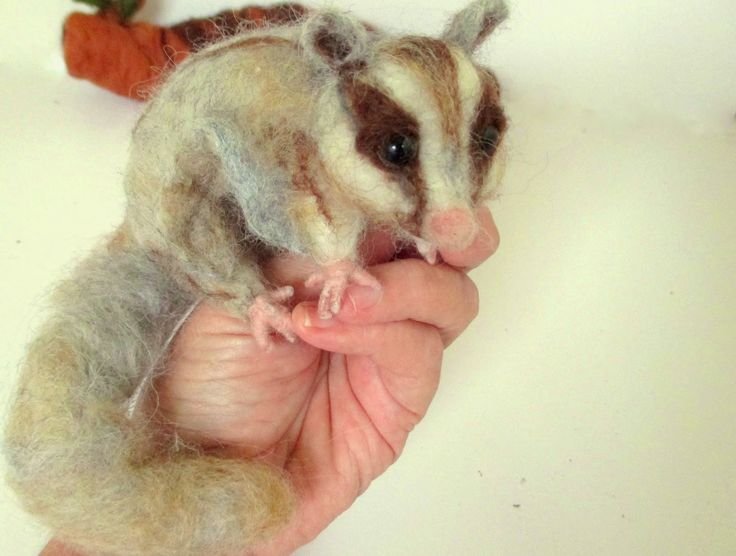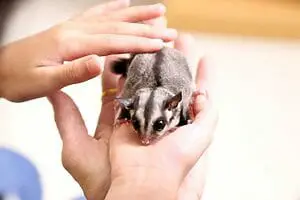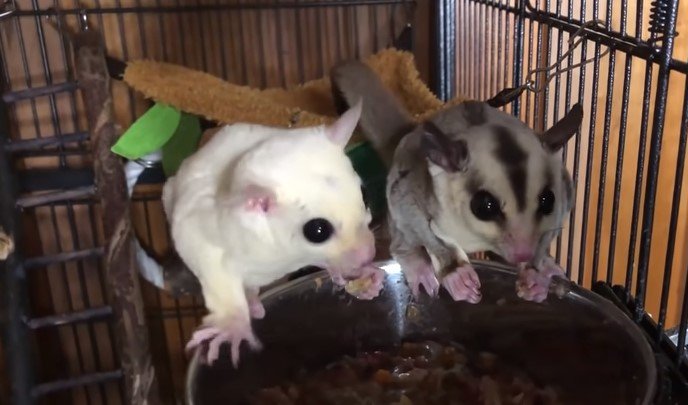Breeding VS Adopting Sugar Gliders Making The Choice
Are you torn between adding a new member to your family and considering the well-being of exotic animals? The choice between breeding and adopting can be perplexing. Both options have their benefits and considerations that need careful evaluation.
Breeding sugar gliders allows you to witness their life cycle firsthand, creating colonies that thrive under your care. However, this path requires extensive knowledge, time, and resources. On the other hand, adopting sugar gliders from reputable sources provides a loving home for these adorable creatures while supporting animal welfare initiatives. In this article, we will discuss breeding vs adopting sugar gliders making the choice.
To make an informed decision, it’s essential to understand the implications of both choices. So let’s dive in and discover which path aligns with your desires and values.
Importance of Responsible Breeding Programs
Responsible breeding practices play a crucial role in the well-being and conservation of sugar gliders. By promoting ethical breeding programs, we ensure that these adorable creatures are bred in a manner that prioritizes their health and happiness.
Ethical breeders follow strict guidelines to guarantee the welfare of sugar gliders. They prioritize the following:
- Health and well-being: Ethical breeders prioritize the overall health and well-being of sugar gliders. They provide proper nutrition, regular veterinary care, and suitable living conditions for these tiny marsupials.
- Genetic diversity: Good breeders understand the importance of maintaining genetic diversity within sugar glider populations. By carefully selecting mating pairs, they prevent inbreeding and minimize potential genetic issues.
- Socialization: Ethical breeders ensure that sugar gliders are properly socialized from an early age. This includes handling them regularly to promote positive interactions with humans and other animals.
Participating in responsible breeding programs also supports broader conservation efforts. By working together, breeders can contribute to preserving the species’ population and protecting their natural habitats.
Pros and Cons of Breeding Sugar Gliders
Breeding sugar gliders can be an appealing option for those looking to expand their furry family. However, it’s important to carefully consider the pros and cons before making a decision. Here are some key points to keep in mind:
Advantages of breeding sugar gliders:
- Control over lineage and genetics: Breeding allows you to have more control over the lineage and genetics of the sugar gliders. You can select specific traits or characteristics that you desire in the offspring.
- Opportunity for bonding: Raising baby sugar gliders from birth provides an opportunity for early bonding, which can lead to stronger connections between you and the gliders.
- Potential financial benefits: If done responsibly, breeding sugar gliders can generate additional income through the sale of healthy offspring.
Disadvantages of breeding sugar gliders:
- Time-consuming process: Breeding requires significant time and effort. From preparing suitable habitats to monitoring pregnancies, it demands a dedicated commitment.
- Resource-intensive endeavor: Properly caring for pregnant females, young joeys, and maintaining optimal living conditions necessitates a substantial investment in resources such as food, supplies, and veterinary care.
- Ethical considerations: It is essential to ensure responsible breeding practices that prioritize the health and well-being of both parent gliders and their offspring.
When deciding whether breeding is the right choice for you, weigh these pros and cons carefully. Consider your level of commitment, available resources, knowledge about proper care techniques, and willingness to take on additional responsibilities. Remember that responsible breeding entails prioritizing the welfare of these unique creatures.
Ultimately, choosing between breeding or adopting sugar gliders depends on your personal circumstances and preferences. Whether you decide to embark on a breeding journey or opt for adoption from reputable breeders or rescues – make sure your decision aligns with what feels right for you while keeping the best interests of the sugar gliders in mind.
Factors to Consider Before Keeping Sugar Gliders as Pets
Owning sugar gliders as pets requires a deep understanding of the commitment involved. It’s important to consider various factors before deciding whether breeding or adopting these adorable pocket pets is the right choice for you.
- Understanding the commitment: Sugar gliders are not low-maintenance pets. They require time, attention, and daily care. Consider if you have the resources and dedication to provide for their needs.
- Space requirements: Sugar gliders need ample space to glide and explore. A large cage with plenty of room for climbing and exercise is essential.
- Socialization needs: These gliders are highly social animals that thrive in pairs or small groups. If you’re unable to spend significant time interacting with them or providing companionship, it may not be suitable.
- Dietary considerations: A balanced diet is crucial for sugar glider health. Their diet consists of fruits, vegetables, protein sources, and specialized pellets. Ensure you can meet their nutritional requirements consistently.
- Evaluating your lifestyle: Assess your lifestyle to determine if it aligns with sugar glider ownership. They are nocturnal creatures who are most active during the evening and night. If your schedule conflicts with their natural rhythms, it could impact their well-being.
Considering these factors will help you make an informed decision about whether breeding or adopting sugar gliders is a good fit for your life. Remember that responsible pet ownership involves providing a loving environment where these unique pocket pets can thrive.
So, take some time to reflect on your ability to commit to their care, provide adequate space and socialization opportunities, meet their dietary needs consistently, and adjust your lifestyle accordingly.
By carefully assessing these factors, you’ll be able to make an educated choice about welcoming sugar gliders into your home as cherished companions.
Finding Reputable Sugar Glider Breeders

Finding a reputable breeder is crucial. Here are some key points to consider:
- Researching reputable breeders who prioritize the welfare of their animals:
- Look for breeders who have a genuine concern for the well-being of sugar gliders.
- Ensure that the breeder follows ethical practices and provides proper care for their gliders.
- Check if they provide adequate information on diet, habitat, and socialization.
- Looking for breeders with experience, knowledge, and a positive reputation within the community:
- Seek out breeders who have been in the field for a considerable amount of time.
- Consider those who possess extensive knowledge about sugar gliders and their specific needs.
- Look for breeders who have established a positive reputation among other sugar glider enthusiasts.
- Asking for recommendations or seeking out online communities dedicated to sugar glider enthusiasts:
- Reach out to fellow glider owners or enthusiasts for recommendations on reputable breeders.
- Join online communities or forums where experienced individuals can provide insights and guidance.
- Engage with these communities to gather valuable feedback on different breeders’ reputations.
By following these guidelines, you can ensure that you find a trustworthy breeder when considering breeding or adopting sugar gliders. Building trust bonds with responsible breeders will help you bring home healthy and happy new members to your glider room.
Remember, it’s important to prioritize the welfare of these adorable creatures while making your choice between breeding and adoption.
Cost Comparison: Breeding vs Adoption
When deciding between breeding or adoption for sugar gliders, it’s important to consider the cost implications. Here is a breakdown of the upfront and long-term expenses associated with each option:
- Comparing upfront costs: Purchasing from a breeder typically involves higher upfront costs compared to adopting from a rescue or shelter. Breeders often charge for the glider itself, as well as any necessary paperwork, such as lineage documentation. On the other hand, adoption fees are generally lower and may cover initial veterinary care and basic supplies.
- Considering long-term expenses: It’s crucial to factor in long-term expenses when making this choice. Both breeding and adoption come with ongoing costs like veterinary care, food, housing setup, and toys. These expenses can add up over time. When considering breeding, it’s essential to account for potential health issues that may arise in offspring and require additional veterinary care.
- Evaluating your budget: Your budget will play a significant role in determining which option is more financially feasible for you. Breeding may require a larger initial investment but could potentially generate income if you plan to sell offspring. Adoption tends to have lower upfront costs but still requires ongoing financial commitment.
Making an informed decision between breeding and adoption means weighing the cost factors involved. Take into account both the immediate expenses and the long-term financial responsibilities associated with each option. By evaluating your budget carefully, you can choose the path that aligns best with your financial situation while ensuring the well-being of your sugar gliders.
Health Considerations for Sugar Gliders
Taking care of your sugar gliders’ health is crucial to ensure their well-being and happiness. Here are some key points to consider:
- Regular Veterinary Check-ups: Just like any other pet, sugar gliders require regular check-ups with a veterinarian who specializes in exotic animals. These check-ups are essential for identifying any potential health issues early on and ensuring that your gliders receive the necessary care.
- Proper Nutrition: A healthy diet is vital for sugar gliders’ overall health. It’s important to provide them with a balanced and nutritious diet that includes fruits, vegetables, protein sources, and specialized sugar glider pellets. Avoid feeding them sugary or fatty foods as it can lead to obesity and other health problems.
- Common Health Conditions: Familiarize yourself with the common health conditions that sugar gliders may encounter. These can include dental problems, respiratory infections, parasites, and nutritional deficiencies. By being aware of these issues, you can take preventive measures or seek veterinary assistance promptly.
- Prevention and Care: Maintaining good hygiene practices is essential in preventing certain health problems in sugar gliders. Regularly clean their sleeping pouches, cage, and toys to minimize the risk of bacterial or fungal infections. Keep an eye on their nails and trim them regularly to prevent overgrowth.
By prioritizing the health of your sugar gliders through regular veterinary check-ups, providing a balanced diet, being aware of common health conditions, and practicing good hygiene habits, you can ensure that your furry companions live happy and healthy lives. Remember that each individual animal may have specific needs or requirements; consulting with a knowledgeable veterinarian will help you tailor their care accordingly.
Conclusion
In making the choice between breeding and adoption for sugar gliders, it is important to consider several factors. Responsible breeding programs play a crucial role in ensuring the well-being of these adorable creatures. However, there are pros and cons to breeding sugar gliders that must be carefully weighed.
Before deciding to keep sugar gliders as pets, it is essential to take into account various factors such as their needs for socialization, diet, and space requirements. Finding reputable sugar glider breeders is vital to ensure you are acquiring healthy and ethically bred animals.
Cost is another significant consideration when choosing between breeding and adoption. Breeding sugar gliders can be a costly endeavor due to expenses related to housing, veterinary care, and specialized diets. On the other hand, adopting a sugar glider from a rescue or shelter may provide a more affordable option.
Health considerations should not be overlooked when deciding whether to breed or adopt sugar gliders. These animals require specific care and attention to maintain their well-being. Regular veterinary check-ups and proper nutrition are essential for their long-term health.
To make an informed decision about breeding vs adoption, it is crucial to educate yourself on the responsibilities involved in each option. Researching reputable breeders or reaching out to local rescue organizations can provide valuable insights.
In conclusion, whether you choose to breed or adopt sugar gliders, prioritizing their welfare should always be your top concern. By considering all aspects of responsible ownership, you can ensure a happy and fulfilling experience with these charming marsupials.
FAQs
1.Are there any legal restrictions on breeding or owning sugar gliders?
The legality of owning or breeding sugar gliders varies by country and even within different states or regions. It is important to research local laws and regulations before making any decisions.
2.How long do sugar gliders typically live?
Sugar gliders have an average lifespan of 10 to 15 years when properly cared for. With proper nutrition, socialization, and veterinary care, they can live even longer.
3.Can sugar gliders be kept as solitary pets?
Sugar gliders are highly social animals and thrive in the company of their own kind. It is generally recommended to keep them in pairs or small groups to ensure their mental and emotional well-being.
4.What type of diet do sugar gliders require?
Sugar gliders have specific dietary needs that include a balanced combination of fresh fruits, vegetables, proteins, and specialized pellets formulated for their nutritional requirements. A varied diet is crucial for their health.
5.Do sugar gliders require any special housing arrangements?
Sugar gliders need spacious enclosures with plenty of vertical space for climbing and exploring. They also require hiding spots, branches for perching, and toys to engage their natural instincts.






